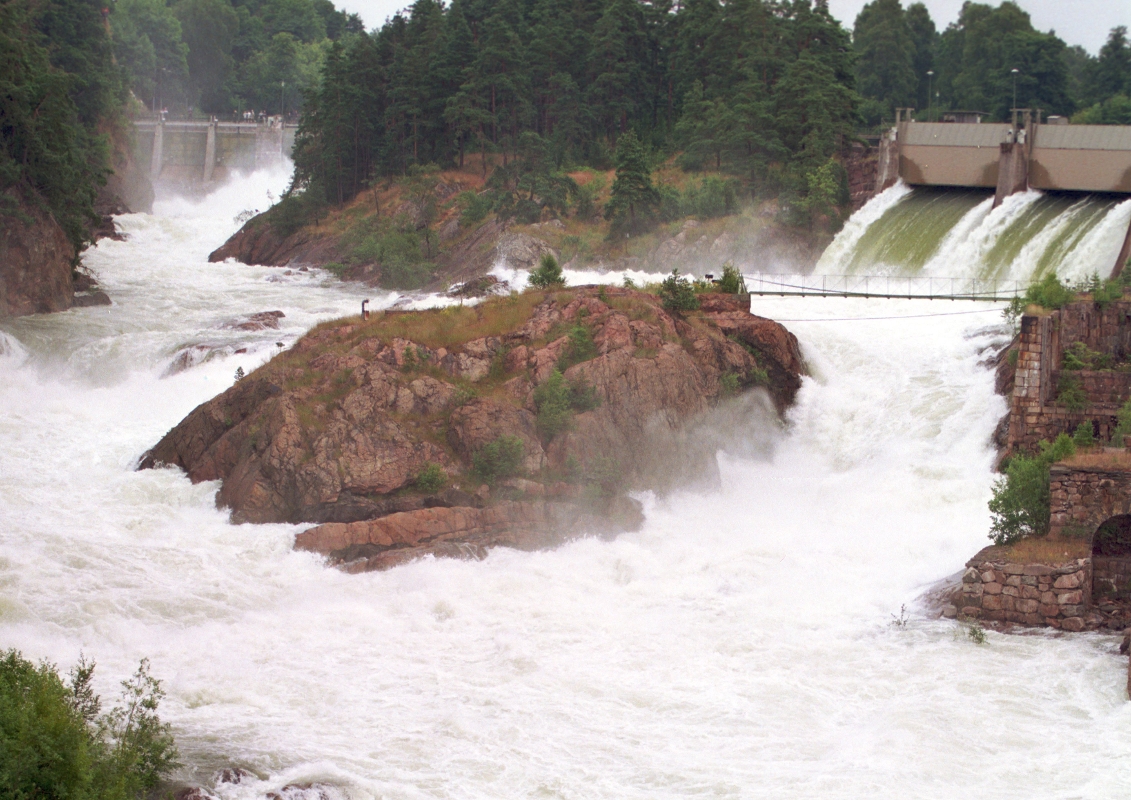Hojum
Facts

Hojum is the second hydro power station in Trollhättan, the first one being Olidan about one kilometre downstream.
The power plant was upgraded in 1992 and a third turbine was added. New technology has been installed in the power plant to reduce the consumption of oil, which, in turn, reduces the risk of oil leaks.
The river Göta älv
Göta älv originates in Lake Vänern, the largest lake in Sweden. Stretching from Lake Vänern to Gothenburg’s harbour and out into the Kattegat Sea, Göta älv carries the greatest volume of water of any river in Sweden, and its 44-metre head (drop) is mainly concentrated in the river’s upper stretch at Vargön, Trollhättan and Lilla Edet. For centuries, Göta älv has been an important transport route, particularly after the construction of the Göta Canal.

